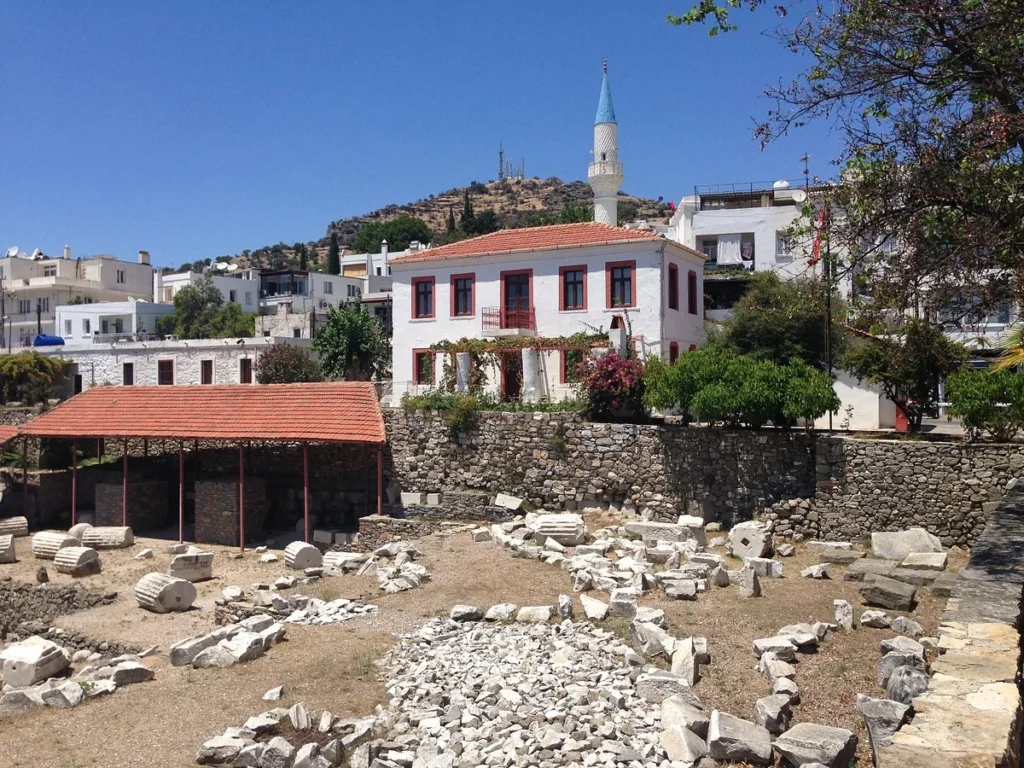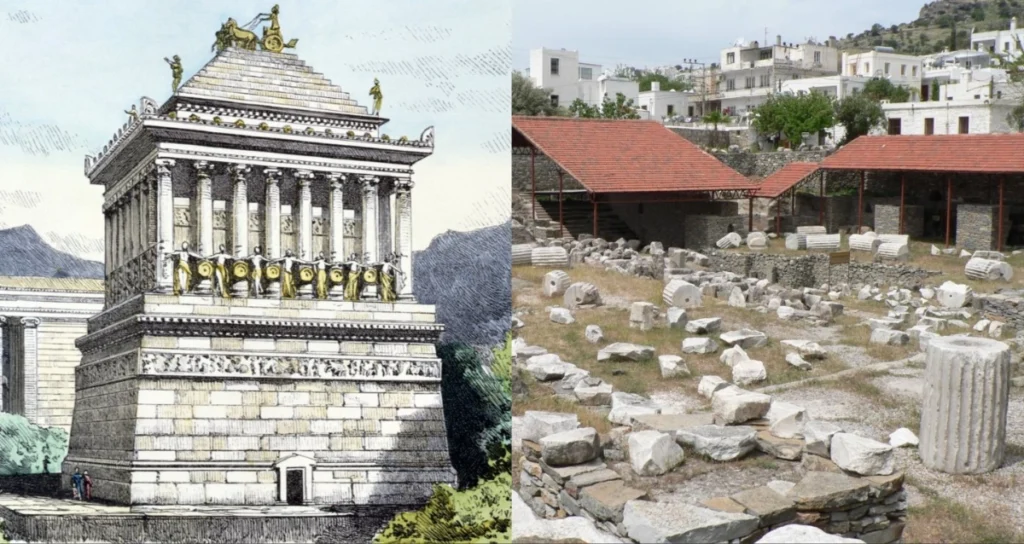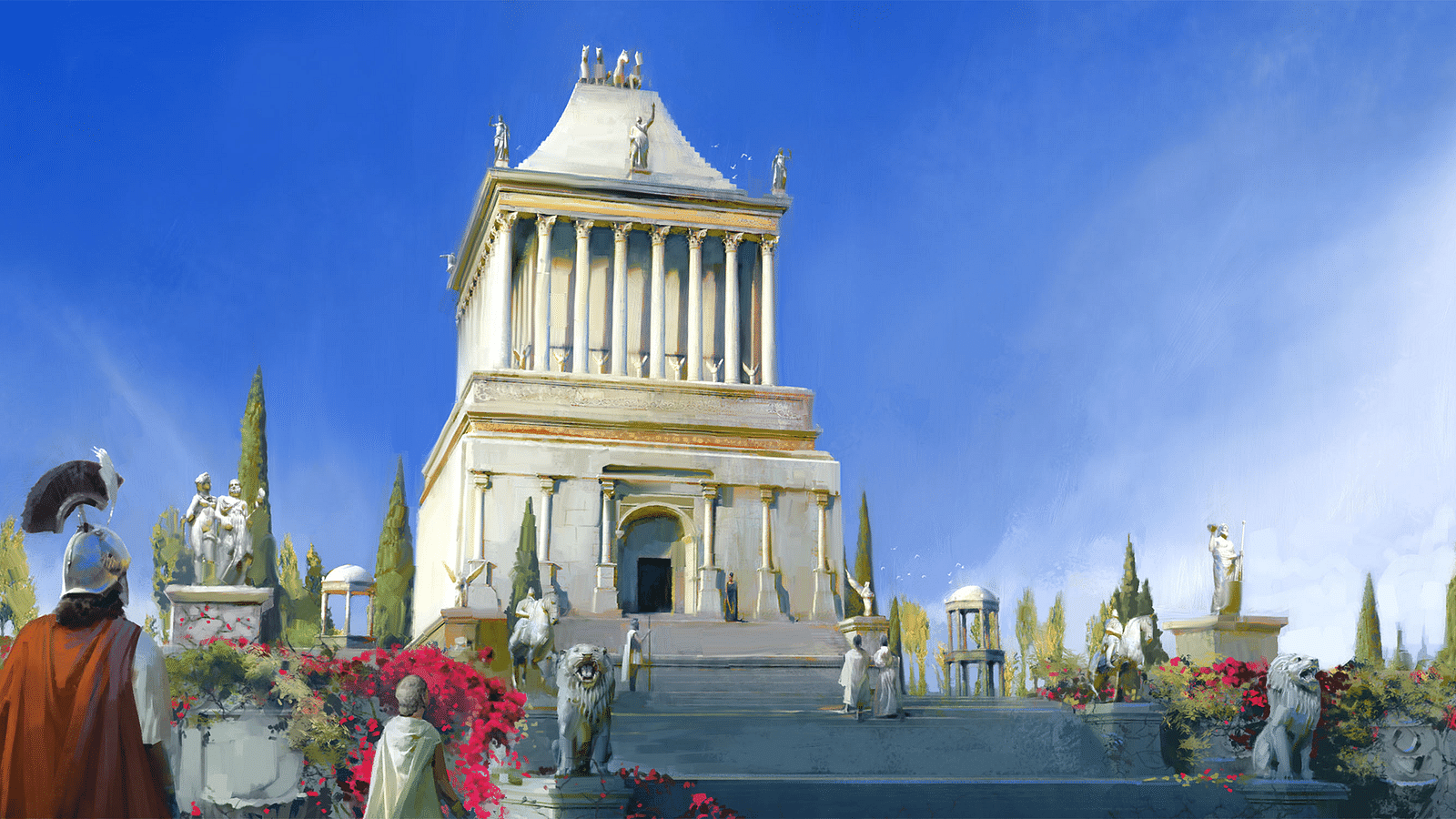Welcome to the fascinating world of The Mausoleum at Halicarnassus – a truly awe-inspiring tribute to eternity. This ancient marvel stands as a testament to the grandeur and craftsmanship of the past, captivating visitors with its rich history and architectural splendor.
History and significance of the Mausoleum
Contents
- 1 History and significance of the Mausoleum
- 2 Architecture and design of the Mausoleum
- 3 Sculptures and decorations of the Mausoleum
- 4 Destruction and rediscovery of the Mausoleum
- 5 Influence and legacy of the Mausoleum
- 6 Visiting the Mausoleum at Halicarnassus today
- 7 Interesting facts about the Mausoleum
- 8 Similar mausoleums around the world
- 9 Author
One of the Seven Wonders of the Ancient World, the Mausoleum at Halicarnassus, as shown in a rendering, rose above the city that is now in Turkey, while its interior displayed the exalted dead. Originally dating from the 4th century BCE, these were built by the Persian satrap of Caria, Mausolus, and his sister-wife Artemisia. Intended to be the depository of the remains of Mausolus, the structure became an icon of the enduring love and authority of its patron rulers.
The mausoleum itself was a grand architectural addition of the time built by some of the most famous architects and sculptors. Years passed as it was finally finished—a grand monument that was over 45 meters high. Rich, powerful individuals came to see the grandeur of the mausoleum, and it became one of the wonders of the ancient world.
The Mausoleum at Halicarnassus was a power symbol and testimony to the artistic and architectural heritage of that age. It cast a monumental shadow that transcended its own period, defining the types of mausoleums and memorials that would follow.

Architecture and design of the Mausoleum
The Mausoleum at Halicarnassus was an extraordinary masterpiece of architecture and design. The unique architectural style of the structure was a combination of Greek and Persian architecture.
The mausoleum was on many levels, and every level had parts of it sculptured, and done decoratively. It consisted of a rectangular base embellished with an Ionic colonnade Atop this stood a stepped pyramid, adorned with the chariot containing figures of Mausolus and Artemisia. Or wrapping the entire structure in intricate friezes and relief sculptures that showcased scenes of mythology, battle, and banal existence.
Firstly, the Mausoleum was incredibly well thought out in terms of design; every detail was in its place. The walls were covered in elaborate sculptures and intricate carvings, in a visual spectacle that left visitors breathless. Maussollos of Caria was looking for something that would truly live up to his image with the most exquisite combination of architectural and artistic skill that led to the exterior of the Mausoleum at Halicarnassus.
Sculptures and decorations of the Mausoleum
The real glamor of the Mausoleum at Halicarnassus was in the sculptures and adornments. Various elements of the structure have been beautifully adorned with some of the finest pieces created by skilled artisans and sculptors.
The friezes and relief sculptures were of many subjects, involving mythological studies, battle scenes, and even some individual portraiture of Mausolus and Artemisia. Not only were these sculptures eye-catching sculptures, but they also acted as a storytelling through which they would tell their viewers narratives or legends.
The statues are very skillfully sculptured, highly detailed and ornamented. The artists used marble and bronze, among other materials, to render their scenes. These fine, intricate sculptures transformed the simple mausoleum into a masterpiece of artistry, unrivaled in all the ancient world.
Destruction and rediscovery of the Mausoleum
The Mausoleum at Halicarnassus met a manner similar to that of many ancient construction despite its magnificence. The shrine had to face continual stresses, with severe earthquakes, invasions and centuries wearing away at the monument and causing extensive damage.
Over time, the once-great pile deteriorated and, by the 15th century, was nothing but a pile of rubble. The mausoleum was subsequently used a quarry for other building materials which served to hasten its ultimate ruin.
The Mausoleum at Halicarnassus was not rediscovered until the 19th century. British archaeologist Charles Thomas Newton carried out excavations which discovered pieces of one of the lions and offered clues to their original design and form.

Influence and legacy of the Mausoleum
The influence and legacy of the mariatogel extend far beyond its physical existence. Its architectural design, decorative elements, and storytelling sculptures influenced countless structures that came after it.
The concept of a monumental mausoleum became popular across cultures, with rulers and nobles seeking to emulate the grandeur of the Mausoleum at Halicarnassus in their own burial sites. Examples include the Taj Mahal in India and the Pyramids of Giza in Egypt, both of which draw inspiration from the ancient wonder.
The Mausoleum at Halicarnassus also left a lasting impact on the field of archaeology. Its excavation and subsequent preservation efforts paved the way for the study and understanding of ancient civilizations. The artifacts and discoveries made during the excavation continue to contribute to our knowledge of the past.
Visiting the Mausoleum at Halicarnassus today
Today, visitors can explore the ruins of the Mausoleum at Halicarnassus in the modern-day city of Bodrum, Turkey. While the structure itself may be gone, the remnants serve as a reminder of its former glory.
A visit to the site allows one to imagine the grandeur of the mausoleum, as well as appreciate the skill and craftsmanship of the ancient architects and sculptors. The surrounding area also offers museums and exhibits that provide further context and information about the mausoleum and its history.
Interesting facts about the Mausoleum
- The word “mausoleum” itself derives from the Mausoleum at Halicarnassus, as it was the first grand mausoleum ever built.
- The construction of the mausoleum took approximately 4 years to complete.
- The mausoleum was adorned with hundreds of intricate sculptures, making it a true marvel of ancient artistry.
Similar mausoleums around the world
While the Mausoleum at Halicarnassus holds a unique place in history, several other mausoleums around the world share similarities in terms of design and significance. Examples include:
- The Taj Mahal, India: Built in the 17th century, the Taj Mahal is a mausoleum renowned for its exquisite beauty and architectural brilliance.
- The Pyramids of Giza, Egypt: These ancient structures served as tombs for Egyptian pharaohs, symbolizing their eternal power and glory.
- The Great Stupa, India: A Buddhist mausoleum dating back to the 3rd century BCE, known for its impressive dome-shaped structure.
The Mausoleum at Halicarnassus stands as a testament to human creativity, devotion, and the pursuit of immortality. Its rich history, architectural splendor, and enduring legacy continue to captivate the imaginations of visitors and historians alike. The mausoleum’s influence can be seen in the structures that followed it, and its remnants serve as a reminder of the grandeur of the ancient world. A visit to the Mausoleum at Halicarnassus is a journey through time, allowing one to appreciate the craftsmanship and artistry of our predecessors.
Also read: Luka Modric: The Living Legend of Real Madrid and Croatia




